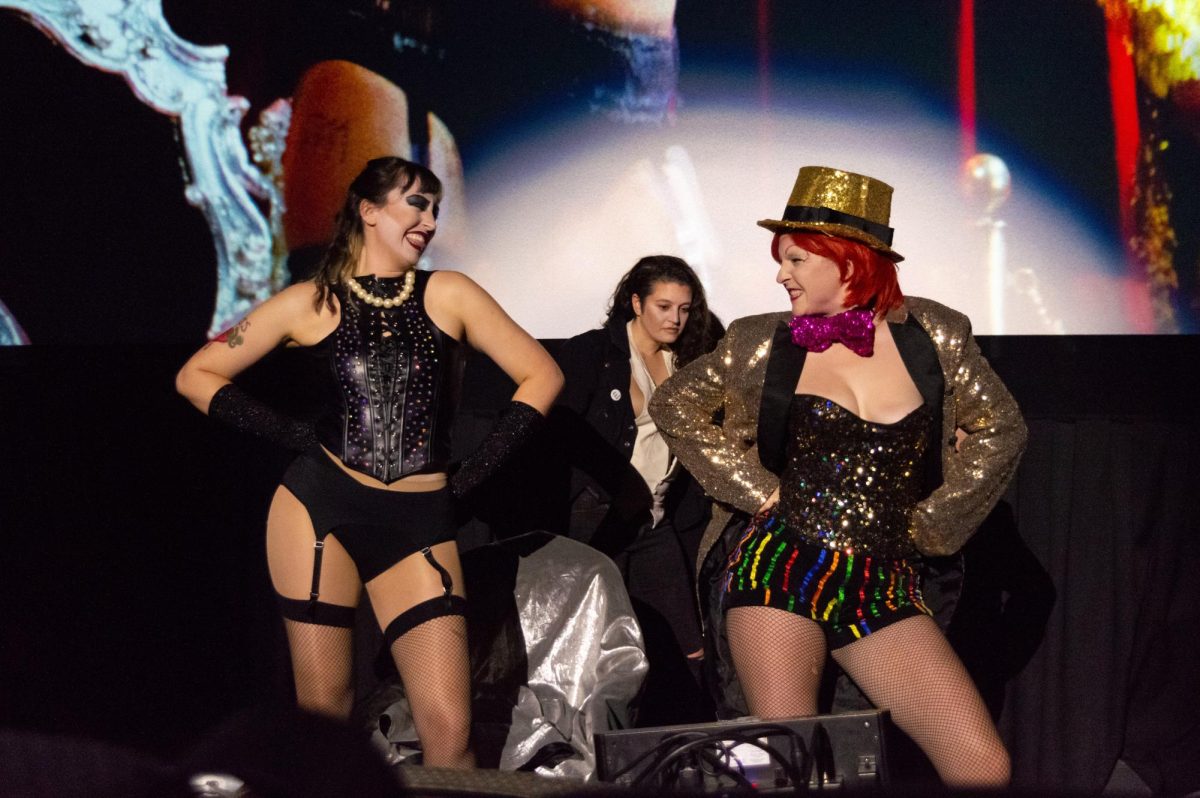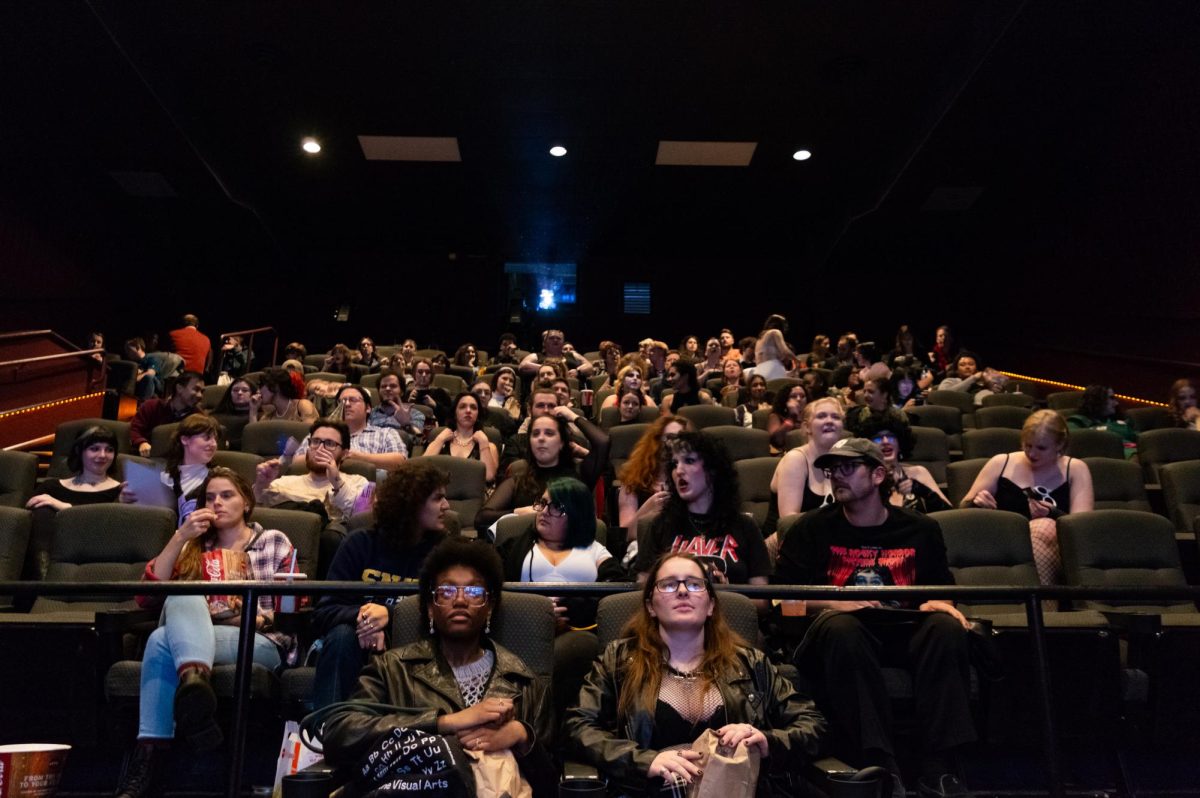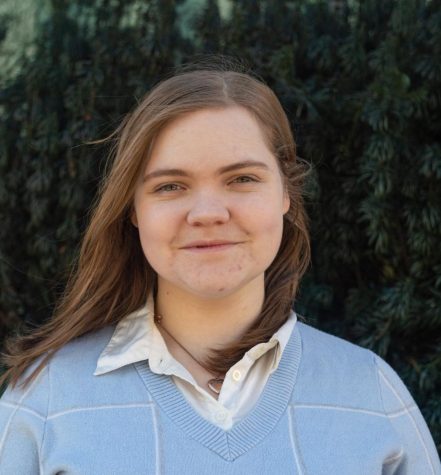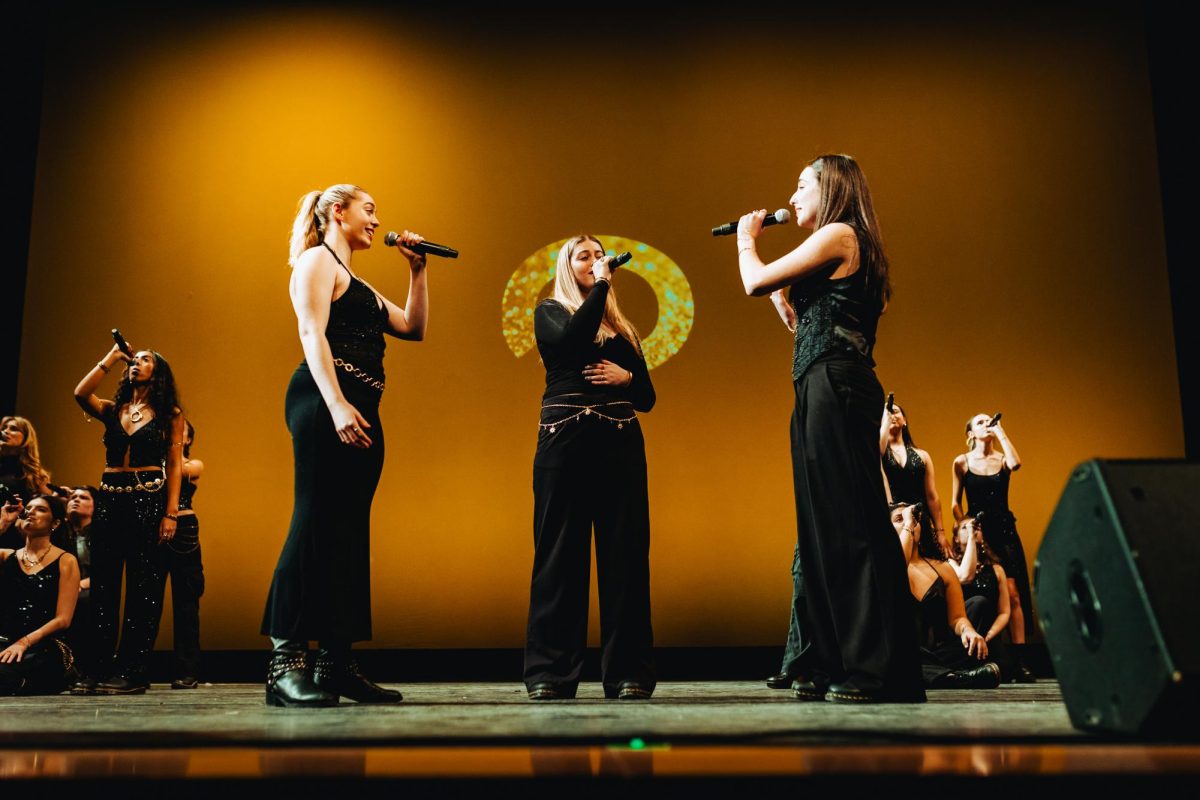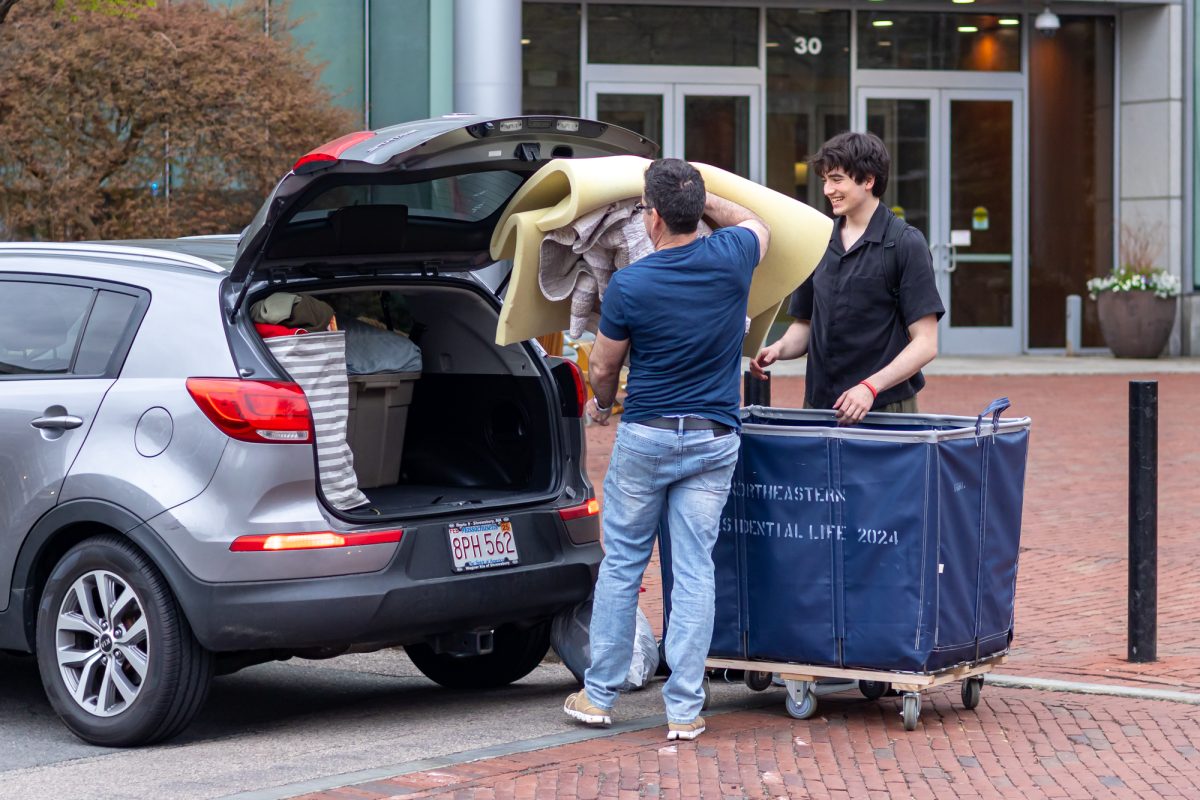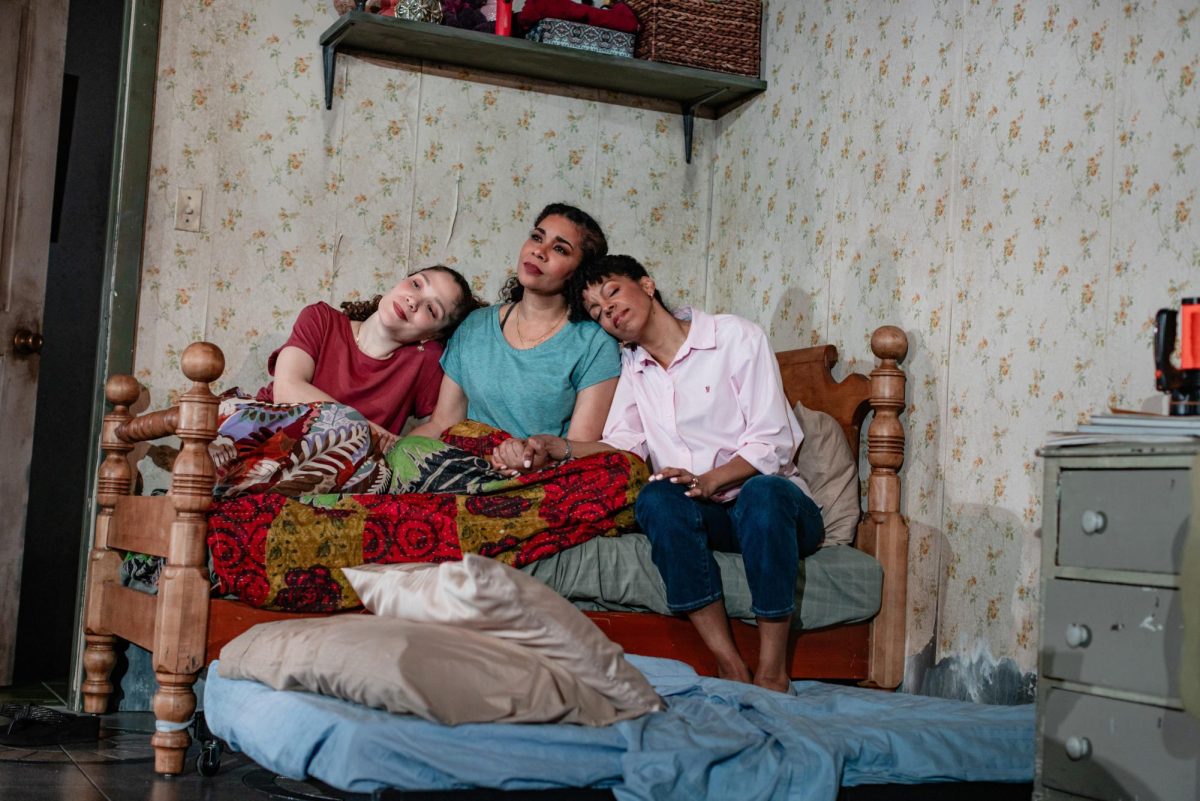The Full Body Cast, a local acting troupe dedicated to reenacting the cult classic “Rocky Horror Picture Show,” performed alongside a showing of the film at the packed Emerson Colonial Theatre Oct. 20. The cast and audience members celebrated its 48th anniversary and the attendance of Patricia Quinn, the legendary actress who played the spunky character Magenta in the movie and starred as an usherette in the original theater production.
“Rocky Horror Picture Show” is a film adaptation of the 1973 musical stage production created by Richard O’Brien, who co-wrote the film’s screenplay and stars as Riff Raff. In the film, directed by Jim Sharman, the absurdity of the plotlines and characters pay tribute to science fiction and horror B-movies created during the mid-20th century.
“Rocky Horror” follows the story of fiancees Janet (Susan Sarandon) and Brad (Barry Bostwick) as they stumble upon the castle of the mad scientist and Transylvanian alien Dr. Frank-N-Furter, played by Tim Curry. While navigating the complicated sexual dynamics of Frank-N-Furter’s lab, they witness the unnatural birth of his latest creation, the titular muscleman whom he plans to use to satisfy himself. Through its campy take on horror and openness to unconventional expressions of sexuality and gender, the film has amassed a devoted cult following.
Audience members arrived dressed in corsets, rainbow shorts, lingerie and gold glitter, referencing some of the film’s iconic costumes. Before the showing, attendees participated in a costume contest, which featured twists on classic renditions of “Rocky Horror” characters and outfits inspired by this summer’s blockbuster, “Barbie.”
Quinn joined the emcee on stage ahead of the screening and discussed her memories of filming the iconic opening sequence of her lips mouthing the words to “Science Fiction/Double Feature,” participating in the original stage play housed in a theater she described as “a room” and hearing the song “The Time Warp” for the first time.
After leading the audience through the moves of “The Time Warp,” a dance sequence performed in the film, the emcee swore in the “virgins” in the crowd, using an altered version of the Pledge of Allegiance to initiate first-time viewers into the “Rocky Horror” community. When the emcee began to list rules for the showing, audience members instinctively booed him, even after he clarified that two of the three rules were “no fire” and “everyone dances ‘The Time Warp.’” This moment perfectly captured the subversive spirit and message of the film, daring its viewers to find reflections of themselves in the insane comedy of Dr. Frank-N-Furter’s wacky laboratory. “Rocky Horror” was ahead of its time despite being inspired by films of the past, as it is set to a rock-and-roll soundtrack, operates on liberated sexual politics and features costumes that would later inspire parts of the punk community.
After opening to lukewarm reviews in 1975, the film and stage production gradually rose in prominence among horror fans and the LGBTQ+ community. As live performance groups inspired by the film grew in popularity throughout the 1980s and ‘90s, the events and culture built around the film offered opportunities for gender nonconforming and transgender people to express themselves in an environment that is inherently accepting and welcoming, a standard that remains true to this day. “Rocky Horror” has become an institution of the horror community, as shadow cast performances and midnight showings take place nearly every weekend in cities across the nation.

“It was going after some of the customs and culture it found oppressive … It’s still around because each new generation finds something new they can apply it to,” said Donna Halper, a media historian and an associate professor of communication and media studies at Lesley University, as she reflected on her experience seeing the initial theatrical run of the 1975 stage production as a talent scout for a record label in New York City. “I think, at the beginning, it was way ahead of the culture. Then, eventually, the culture caught up to it.”
“‘[Rocky Horror]’ attracted young people because of its message of tolerance and transgressiveness in a very restricted society. Gradually, it just became an audience participation phenomenon where it was like, ‘let your freak flag fly,’” Halper said. “In the midnight show of ‘Rocky Horror,’ we’ve got no time for prejudice. We’re busy just having fun in whatever way we want to create it.”
At a showing of “Rocky Horror,” audience participation is not only encouraged but required. Some attendees were given paper bags that included playing cards, toilet paper, noisemakers and other objects that were to be used or thrown at designated moments in the film, per the traditions established after decades of screenings.
During the movie, nearly every other line of dialogue elicits a shouted response from the most knowledgeable audience members, a practice which began during midnight showings of the film at the Waverly Theatre in New York City and has carried on since 1976 with an impressive level of continuity.
After decades of midnight showings, the pandemic was the first true threat to the longevity of the “Rocky Horror” community. As most theaters were forced to close for months on end, some productions brought their shows to Zoom. But as movie theaters began to reopen and the insanity of Dr. Frank-N-Furter returned to screening rooms, the strength and necessity of the “Rocky Horror” live experience became clearer than ever.
“So much of the experience is built around the community, to begin with, and it really encourages people to be friendly and welcoming,” said Zoe Chappell, a student at the University of Massachusetts Lowell.
Through its embrace of sexual liberation and androgyny, “Rocky Horror” remains a way to provide community and connection for people on the fringes of society across many generations, welcoming the traits and interests that are often unwelcome in other settings.
“You can be whoever you want to be and nobody judges you,” said Jenny McGunagel, a Boston resident who came to the showing to “dress up and have fun.”
Showings of the film offer an opportunity to embody the film’s core message of “don’t dream it, be it.” As a community that is united by their differences, the “Rocky Horror” fanbase’s ethics of acceptance have cemented the film as a testament to the glory and gore of leading a life that embraces the imaginative potential of science fiction and breaks free from the limitations of a sexually repressive society.
“You don’t leave ‘Rocky Horror’ feeling furious. You never do,” Halper said. “Even though, to some degree, it does attack stereotypes, myths, prejudice, bigotry — but it does it with a smile, and with a little sarcasm, and with a little humor and with a little insight. And the rest of it is whatever you bring.”


